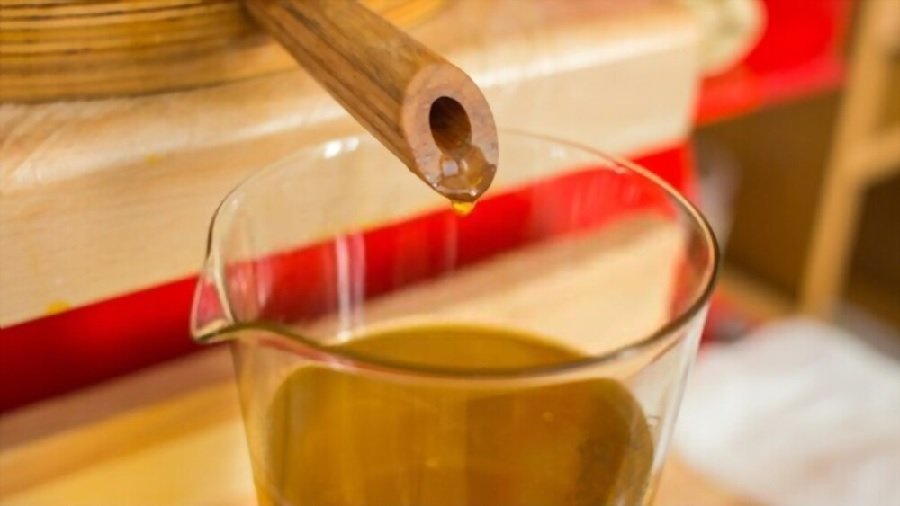
Cold pressing, which is a term related to the production of olive oils, ensures that the temperature of the olive paste is at most 27 celcius; In other words, it is the general name for extracting olive oil from olives at low temperatures. People often ask "what is cold pressed?" they are very curious when they hear. It is a type of method used as olive oil production, which is applied to obtain olive oil completely.
Olive oils, which are important in many aspects, are also important today according to the types of production. Thanks to the mineral and many components found in olives, the way olive oil is obtained plays an important role in terms of health. In olive oil production, the quality of olive oil emerges and accordingly, it is desired to be known as whether it is cold pressing or hot pressing. Nowadays, cold pressing is preferred to obtain the best quality olive oils. Since cold pressed olive oils are pressed at maximum 27 degrees, they do not lose their minerals and components.
What is Cold Pressing and What Should Be Degree?
It is preferred at temperatures of 27 degrees and lower when cold pressing. In this way, the best harvest is obtained in olive oil production and the real taste for olive oil is revealed. You can see a more delicious side of olives, with early harvest olive oil and cold pressed according to their types.
Some processes are important for olive oil production. One of them is the process of kneading olive dough to obtain olive oil. The basic starting point of the cold pressing method is this part. The olives are kept under control by looking at the dough temperature and the cold-pressed olive oil is completed so that the temperature kept under control is below 27.
When quality olive oil is desired to be produced by many producers, it occurs when the temperature is increased and excess oil production is desired. In such cases, hot pressing is used. The higher the temperature of the first olive oil dough, the greater the increase in the amount of olive oil produced. However, in this case, the desired quality is not achieved and the quality decreases accordingly.
In order for the obtained olive oil to be of high quality, it is important to obtain olive oil with the temperature below 27 degrees. Olive oils produced in this way are known directly as cold pressed olive oil. In this way, olive oil is obtained by cold pressing, which kneaded olive paste below 27 degrees.
What are the Differences Between Hot and Cold Pressed?
While olive oil is produced, it is divided into cold and hot pressed types. Although the olive oil obtained is generally divided into types as hot-pressed or cold-pressed, generally high-quality olive oil is made by cold-pressing. Today, the process of kneading and squeezing the olive paste squeezed with hot water is defined as hot pressing. Although the amount of oil is higher here, the quality will be slightly lower. As the temperature of the water decreases, the amount of oil decreases and the amount of quality increases. This is known as cold pressing. There are differences as hot pressed with hot water and cold pressed with cold water.
The vitamins and minerals contained in cold pressed extra virgin olive oil are much higher than other types of extraction. For this reason, cold pressing is preferred so that all components such as vitamins and minerals in the olive remain directly in the oil without losing them.
Buy cold-pressed oil from grocery stores because they hydraulic press of oil from olive vegetables, cold-pressed oils, extract the oils.
The type of oil is fresh olive and oil extract has food safety, shelf life, health benefits, vitamins minerals, the benefit of cold-pressed of oils and veggies. The benefit of cold-pressed is centrifugal olive oil because of masticating olive, it makes high-pressure processing with spinning blades.
Cold Pressed Olive Oil Features
The quality of cold-pressed oils with an ideal temperature of less than 25 degrees increases as the temperature decreases. However, one of the important points is that the olives were collected in the period called the early harvest period and cold pressed started accordingly. Due to its natural nature, cold-pressed olive oils are processed without using any chemicals.
Thus, during the natural and cold pressing period, olives transfer their smell and taste directly to the olive oil. In any way, olive oil is produced by cold pressing without losing any value with its naturalness, taste or smell. Cold pressing stages are explained as follows:
Production types are always important in olive oil, where you will prioritize quality and taste in accordance with your taste. There are many types of extra virgin olive oil, cold pressed, early harvest or similar. Among these types, which are understandable by their color, taste and smell, cold pressed olive oil is the most preferred. It has always been the most preferred cold pressing method due to its high nutritional value and its higher nutritiousness and taste.